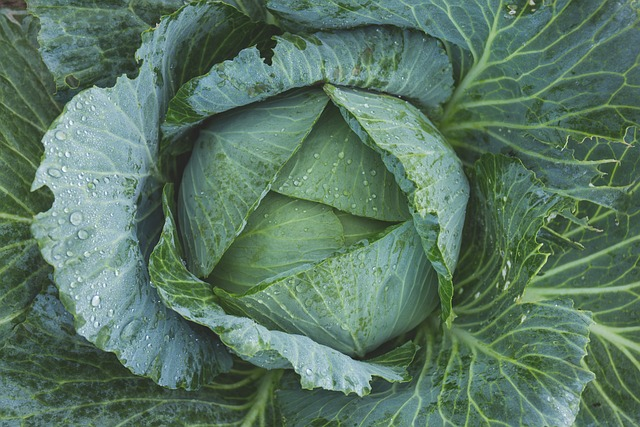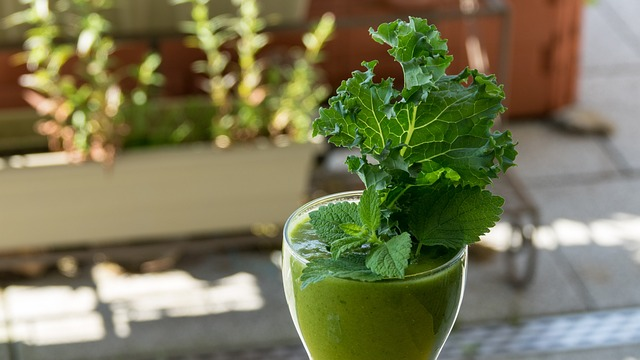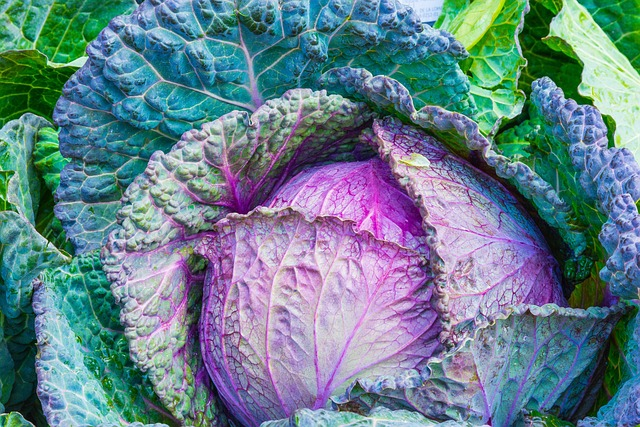Unlock the Superfood Power of Kale: Nutritional Facts and Health Benefits
Kale is a powerhouse of nutrition and health benefits that are often overlooked. This article will unlock the superfood power of kale, exploring its nutrition facts and numerous health advantages. From the potential to reduce cancer risk to the specific micronutrients it provides, this comprehensive guide will help you learn how to get the most out of this versatile vegetable.
Discover what makes kale an essential for your diet so you can start taking advantage of its incredible health-promoting properties today.
What is Kale?
Kale is a leafy green vegetable that’s been around since Roman times, and is believed to have originated in the Mediterranean region. It comes in many varieties – from curly kale with its dark green ruffled leaves, to red Russian kale with its sweet delicate taste like sorrel mixed with pepper and lemon.
When shopping for this nutritious veggie, make sure you pick out dark crisp leaves – no wilted or limp ones! You can also add other cruciferous vegetables such as broccoli and cabbage to your meals featuring kale. And don’t forget about fruits too!
Eating kale has a plethora of health benefits – it can improve heart health, fight cancer cells, and support eye health. Plus it’s full of vitamins and minerals while being low in calories. To get the most out of this superfood, store it properly and prepare it correctly. Kale chips are especially delicious when cooked right!
Nutritional Benefits of Kale
Kale is a nutrient-packed green vegetable that has been grown for centuries and is now becoming increasingly popular. It provides numerous health benefits, especially due to its low fat, high fiber content and good source of vitamins and minerals. Adding kale to one’s diet can provide a range of health benefits, such as boosting intake of key vitamins and minerals while also being low in calories.
Furthermore, kale is especially rich in vitamin C, an antioxidant that helps with synthesis of collagen, a protein found in bones, muscles, and skin. Eating purple varieties of kale can also provide additional health benefits, such as anthocyanins, which are linked to improved heart health.
One cup of raw kale (20.6g) contains a mere 0.6g of fat.
Rich in Vitamins and Minerals
Kale is a nutritious powerhouse, packed with essential vitamins and minerals. One cup of cooked kale provides at least 20% of the daily need for vitamin A and over 23% of the daily requirement for vitamin C. It’s also rich in potassium to maintain healthy blood pressure, calcium for strong bones, lutein and zeaxanthin for eye health – all vital nutrients! So why not add some kale to your diet?
High in Fiber
Kale is high in dietary fiber, a nutrient that can lower blood pressure and reduce the risk of cardiovascular diseases. It binds bile acids in the digestive system, preventing them from being reabsorbed and reducing cholesterol levels. Plus, it helps to regulate blood glucose levels – making it an ideal addition to any weight loss diet. But why is kale so important for weight loss?
Low in Calories
Kale is also calorie-conscious, with just 20 calories in one cup of raw kale. But why is it an ideal choice for weight loss warriors? Because it’s nutrient-dense and low in calories. Plus, packed with vitamins A and C, kale is a great way to get your essential nutrients!
Health Benefits of Kale
Kale is a nutritional powerhouse, a dark leafy green that packs a punch of vitamins and minerals, fiber, and antioxidants. Eating this superfood can provide an array of health benefits – from improved heart health to cancer prevention and even support for eye health.
Vitamin A, C, K, magnesium, iron and calcium are just some of the nutrients found in kale. It’s also an excellent source of dietary fiber, which helps keep your digestive system healthy while reducing colorectal cancer risk.
Plus it’s rich in antioxidants, which have been proven to reduce diabetes complications. And lutein and zeaxanthin contribute to healthy eye cells protecting against age-related macular degeneration and cataracts – making kale truly one-of-a-kind!
Improves Heart Health
A recent study of 149 people with metabolic syndrome uncovered remarkable results: eating 14 g of kale powder daily for 8 weeks led to a significant decrease in LDL (bad) cholesterol, blood pressure, belly fat, and fasting blood sugar levels. In other words, adding kale to your diet can help protect your heart health and reduce the risk of developing certain illnesses.
Kale is also an excellent source of calcium, magnesium, and other minerals that are essential for strong bones – making it a great way to get your daily dose of nutrients. Plus, its sweeter taste than some other leafy greens makes it an ideal addition to meals!
Fights Cancer
Kale is rich in antioxidants, a powerful protector against cancer. A study found that cruciferous vegetables like kale, broccoli and cabbage can reduce the risk of bladder, breast, colon and ovarian cancers. Eating more kale is beneficial for your health – it’s a green vegetable packed with vitamins and minerals! So why not add some to your diet? It could help protect you from certain types of cancer.
Supports Eye Health
Kale is also a powerhouse for eye health. The lutein and zeaxanthin found in kale can act as shields, protecting your eyes from the damaging effects of UV rays and blue light. Eating raw kale – either in salads or as a snack – is the best way to get these two carotenoids into your system. To make sure you’re getting all the benefits, it’s important to choose dark green, fresh kale.
If you decide to cook it, be sure not to overcook it so that you don’t lose any of its nutrients. But beware: those taking blood thinners such as warfarin (Coumadin) should watch their intake of this leafy vegetable; too much could interfere with their medication’s activity. Similarly, people who suffer from oxalate-containing kidney stones should limit or avoid consuming kale altogether.
Kale is like an armor for our eyes – if we use it correctly!
How to Use Kale
Kale is a dark green, leafy vegetable that is part of the cruciferous family of vegetables which includes Brussels sprouts, cabbage, and broccoli. It is a popular vegetable that has many health benefits and can easily be incorporated into any healthy diet. Kale can be eaten raw, cooked, or added to meals and smoothies.
When adding kale to meals, it is important to prepare it correctly. Wash the leaves thoroughly and tear or cut the leaves into small pieces. Blanching the kale for a few minutes before adding it to a meal will reduce its bitterness and enhance its flavor. It is also important to note that kale should not be consumed in large amounts by those taking blood thinners or those with high blood pressure.
Kale can be cooked in a variety of ways. One way is to steam it. Add one cup of water to a pot and bring it to a boil. Place the kale in the pot, reduce the heat to low, and cover the pot. Cook for about 5 minutes, or until the leaves are tender. Kale can also be sautéed with olive oil and onion or garlic. Kale can be baked into kale chips as a crispy snack. Simply toss the leaves with a bit of olive oil, season lightly, and bake in the oven at 275°F for 15-30 minutes. For a more nutrient-packed smoothie, add a handful of kale to any favorite smoothie recipe.
Incorporating kale into a diet can be a great way to increase the intake of vitamins, minerals, and other nutrients. The Department of Agriculture’s MyPlate recommendation advocates that adults and children older than nine years of age should have 1.5–2 cups of dark-green vegetables on a weekly basis. This is to ensure a healthy diet and to get the right amount of important nutrients. Fill half of your plate with fruits and vegetables every day, tear leaves and blend into morning smoothie, replace regular potato chips with roasted kale chips, and make hearty bean soup with kale.
Cooking Kale
Kale can be cooked in a myriad of delicious ways. Why not try making kale chips? To make them, start by removing the ribs from the kale and tossing it in a bowl with some olive oil or lightly spraying it with cooking spray. Sprinkle your favorite combination of spices – cumin, curry powder, chili powder, roasted red pepper flakes or garlic powder – over the leaves and mix to combine. Then spread the kale on a baking sheet and bake at 275°F for 15-30 minutes until they are crispy. Alternatively, you can steam kale by adding one cup of water to a pot and bringing it to a boil before placing the leaves in there. Reduce heat to low and cover pot; cook for about 5 minutes until tender. Or sauté with olive oil and onion or garlic: simply heat oil in skillet over medium heat then add kale; sauté for a few minutes until tender while stirring occasionally.
Adding Kale to Meals
Kale can be compared to a superhero, packing a powerful punch of nutrients in every bite. Whether you’re adding it to salads, soups or stir-fries, kale needs to be washed and chopped before being added to your meal. Blanching the leaves for a few minutes will reduce its bitterness and bring out its flavor. Baby kale is the most tender type of kale – perfect for salads! Simply tear into small pieces and mix with other ingredients. For soups and stir-fries, add the chopped leaves near the end of cooking so they retain their crunchy texture. Eating more kale is an easy way to get all its health benefits – like getting superpowers from eating spinach!
Summary
Kale is truly a superfood. Loaded with essential vitamins and minerals, this nutrient-dense vegetable packs a punch when it comes to maintaining a healthy lifestyle. Kale’s low fat and caloric content make it an ideal choice for those looking to lose weight and its high fiber content helps regulate blood glucose levels in the body.
The health benefits of kale include improved heart health, decreased cancer risk, and protection against age-related vision loss. Eating raw or cooked kale, adding it to smoothies or meals, and baking it into chips are easy and delicious ways to incorporate kale into any diet.
So unlock the superfood power of Kale today and experience the many nutritional and health benefits this versatile veggie has to offer!
Frequently Asked Questions
Is kale healthier for you than spinach?
Kale is significantly healthier for you than spinach as it contains more vitamins K and C, fewer calories and more flavonoids with anti-inflammatory and anti-carcinogenic properties.
Therefore, if you’re looking to maximize the health benefits in your diet, kale should likely be your go-to leafy green.
Is it better to eat kale raw or cooked?
Overall, it appears that the health benefits may depend on your personal goals and preferences. For a higher antioxidant content and more vitamins, raw kale is ideal, while steaming can help retain other nutrients like minerals.
Ultimately, both cooked and raw kale have their merits and should be included in a balanced diet.
Is it good to eat kale everyday?
Considering Manganiello’s advice of eating no more than two servings per day, it is alright to eat kale everyday.
However, remember to vary your food choices and create a balanced diet full of different nutrient-rich foods.
What’s the healthiest way to eat kale?
For optimal nutrition and flavor, aim to incorporate kale into your weekly meals in a variety of forms. The healthiest way to eat kale is to mix up the cooking methods, such as steam, sauté, bake or include it raw. Doing this will provide you with the most nutrition possible.
What does kale do for your body?
Kale is a powerhouse of nutrients that offer benefits such as supporting eye health, maintaining heart health, and protecting against cancer. It also helps boost the immune system and regulate blood pressure, while promoting weight management.
Ultimately, its nutrient-dense properties make kale a great addition to any healthy diet.










